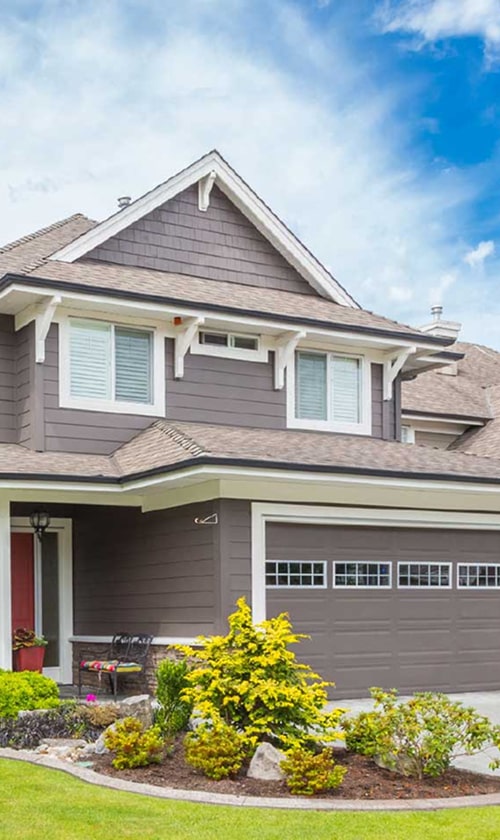Understanding Heat Pump Efficiency

We’ll explore the fundamental concepts of energy efficiency and examine the efficiency ratings critical to understanding heat pump performance. Knowing these will guide us in selecting and operating heat pumps optimally.
Energy Efficiency Basics
The concept of energy efficiency in heat pumps pertains to the amount of heating or cooling provided relative to the energy consumed. Heat pumps transfer heat from one place to another and, in doing so, they conserve more energy than conventional heating and cooling systems. The Coefficient of Performance (COP) measures the heat pump’s efficiency in heating mode by comparing the heat output to the electrical energy input. The higher the COP, the more efficient the heat pump.
- COP: Ratio of heat output to electrical energy input (Higher COP, Higher efficiency)
For cooling, the Energy Efficiency Ratio (EER) is the standard metric. It represents the cooling capacity (in British Thermal Units, BTU) per hour divided by the power (in watts) used.
- EER: BTU/hr divided by power in watts (Higher EER, More efficient cooling)
Efficiency Ratings Explained
When discussing seasonal efficiency, two acronyms are pivotal: Seasonal Energy Efficiency Ratio (SEER) and Heating Seasonal Performance Factor (HSPF).
- SEER: This gauges the cooling efficiency of the heat pump over the entire cooling season. It is calculated as the seasonal cooling output (in BTU) divided by the seasonal electrical energy input (in watt-hours).
SEER Rating Efficiency Level 13-16 Standard >16 High Efficiency - HSPF: This metric assesses the heating efficiency during the heating season. Like SEER, HSPF is a ratio of seasonal heating output (in BTU) over electrical energy input (in watt-hours).
HSPF Rating Efficiency Level 8-10 Standard >10 High Efficiency
Both SEER and HSPF are critical heat pump efficiency ratings that help us understand and compare the performance of different models throughout their operational seasons. Higher SEER and HSPF ratings indicate a more energy-efficient heat pump, which can result in lower utility bills and environmental impact. It’s important to choose a heat pump with ratings that will meet our needs for both warmth and cooling in an energy-efficient manner.
Keep in mind, while these ratings provide a baseline for efficiency, actual performance can be influenced by installation quality, maintenance, local climate, and usage patterns. Thus, we always recommend consulting with a qualified HVAC professional to ensure the heat pump chosen is well-suited for the specific conditions of its intended environment.
Key Factors Influencing Heat Pump Performance

When evaluating heat pump performance, we must consider specific factors that can significantly influence both heating and cooling efficiency. These include the local climate, appropriate sizing, the quality of installation and ductwork, and the thermal integrity of the building.
Climate and Local Weather Conditions
Climate: A heat pump’s efficiency is greatly impacted by the surrounding climate. Air-source heat pumps are typically more effective in milder climates, as extreme temperatures can reduce their efficiency. In contrast, geothermal heat pumps maintain high efficiency regardless of air temperature because they exchange heat with the ground, which remains at a more constant temperature.
Heat Pump Size and Sizing
Sizing: Choosing the correct size for a heat pump is critical. An undersized unit won’t adequately heat or cool a home, leading to increased energy consumption. Conversely, an oversized unit will cycle on and off more frequently, causing unnecessary wear and reducing efficiency. Proper sizing entails detailed calculations based on the home’s square footage, layout, and heat loss characteristics.
Installation and Ductwork Quality
Installation and HVAC Ductwork: Quality installation by a certified HVAC professional is integral. Proper installation ensures optimal performance and longevity of the heat pump. Additionally, well-designed and sealed ductwork is crucial for efficient air distribution, minimizing losses that occur through leaks or inadequate insulation.
Insulation and Home Envelope
Insulation: Adequate insulation and a tight home envelope are key to maximizing heat pump efficiency. They help to retain conditioned air, reducing the load on the heat pump. A well-insulated home will require less energy to maintain comfortable temperatures, enhancing both cooling efficiency and heating efficiency.
Operational Costs and Energy Savings

When considering heat pumps, our assessment of operational costs and potential energy savings is critical to making an informed decision. We need to examine the specifics of energy consumption, cost factors, and the benefits of regular maintenance.
Calculating Energy Costs
To accurately determine our monthly energy bills, we must first identify the Seasonal Energy Efficiency Ratio (SEER) and Heating Seasonal Performance Factor (HSPF) ratings of our heat pump. These figures allow us to calculate the annual operating costs by dividing our estimated usage by the efficiency ratings. A higher SEER or HSPF rating means more energy savings and lower operating costs for us, aligning with Energy Star standards for cost-effective operations.
Example Calculation:
- Cooling Load: 6,000,000 BTU/year
- SEER: 15
- Electricity Rate: $0.12/kWh
Annual Cooling Cost:
6,000,000 BTU / (15 SEER x 1000) x $0.12 = $480
Maintenance and Energy Conservation
Regular maintenance of our heat pump is essential to maintaining its energy-efficient operation and minimizes the overall operating costs. This maintenance typically includes cleaning or replacing filters, checking ducts, coils, and fans for obstructions, and ensuring the refrigerant is at the proper level. Through diligent maintenance, we can keep the system running at peak performance, which is instrumental in achieving energy savings and cost savings over time.
- Key Maintenance Tasks:
- Monthly filter checks
- Biannual professional inspections
- Seasonal performance evaluations
Lifecycle and Long-Term Savings
The lifecycle of a heat pump generally spans between 10 to 15 years. Throughout its life, the initial higher cost of more efficient units can be offset by the cumulative energy savings on our monthly bills. Investing in a heat pump with a high SEER and HSPF rating is likely to result in lower operating costs over the long term, making it a more cost-effective option for us. Furthermore, the utilization of high-efficiency systems often leads to a reduction in greenhouse gas emissions, contributing to both financial and environmental savings.
- Long-Term Savings Considerations:
- Higher SEER/HSPF units lead to greater energy savings
- Longer lifespan models can provide sustained cost-effectiveness
- Regular maintenance aids in preserving system efficiency
Heat Pump Types and Their Efficiencies

When selecting a heat pump, it’s essential to understand the various types available and their respective efficiencies. We’ll discuss the energy efficiency and performance of three common heat pump types: air-source, geothermal, and ductless heat pumps.
Air-Source Heat Pumps
Air-source heat pumps are one of the most commonly installed types. They operate by transferring heat between the inside of a building and the outside air. Their efficiency is measured by the Seasonal Energy Efficiency Ratio (SEER) for cooling and the Heating Seasonal Performance Factor (HSPF) for heating. Recently, air-source heat pumps have seen significant improvements, with many models achieving a SEER value ranging from 15 to 20+ and an HSPF from 8 to 12.
Geothermal Heat Pumps
Geothermal heat pumps (GHPs) leverage the stable temperature of the ground or nearby water sources to provide heating and cooling. These systems tend to have higher upfront costs but offer greater efficiency—consistently high year-round—due to the ground’s constant temperature. GHPs commonly achieve a Coefficient of Performance (COP) between 4 and 6 for heating and an Energy Efficiency Ratio (EER) from 10 to 30 for cooling.
Ductless Heat Pumps
Also known as mini-splits, ductless heat pumps allow for zoned heating and cooling without the need for ductwork. This not only reduces energy lost through ducts but also enables precise control over individual room temperatures. Ductless systems have varied efficiency levels, with SEER values up to 30 and HSPF ratings as high as 12. They are considered a particularly energy-efficient option for renovations or additions to existing buildings where ductwork installation is not feasible.
Choosing the Right Heat Pump
When selecting a heat pump, it’s crucial for us to match it to our specific heating and cooling needs, consider environmental certifications, and seek professionals who can provide expert installation and advice.
Assessing Heating and Cooling Needs
Understanding our home’s unique heating and cooling demands is the first step in choosing a heat pump. We should consider factors such as the size of our home, insulation quality, local climate, and our comfort preferences. An air-source heat pump might suffice in milder climates, while a geothermal heat pump could be more effective in regions with extreme temperatures. Here’s how we can assess our needs:
- Home Size: Calculate the square footage to estimate the capacity needed.
- Insulation: Evaluate insulation levels; better insulation reduces energy requirements.
- Climate: Consider local weather patterns which will affect the heating and cooling load.
- Comfort: Determine our desired indoor temperature and compare it against local outdoor temperatures.
Energy Star Ratings and Environmental Impact
Selecting a heat pump with a high Energy Star rating ensures that we’re choosing a model that uses less energy and reduces our carbon footprint. This label helps identify top-performing HVAC systems that meet strict energy efficiency guidelines set by the U.S. Environmental Protection Agency. Look for the following when considering energy efficiency:
- Energy Star Certification: Confirms the heat pump meets energy performance standards.
- SEER and HSPF Ratings: Higher Seasonal Energy Efficiency Ratio (SEER) and Heating Seasonal Performance Factor (HSPF) numbers indicate better efficiency.
Professional Guidance and Contractor Selection
Working with professional HVAC technicians is essential for choosing the right heat pump and ensuring it is installed correctly. Reliable contractors can offer valuable advice, conduct necessary calculations for sizing, and ensure optimal efficiency and comfort. Take the following steps to choose the right contractor:
- Qualifications: Verify that the HVAC contractor has the proper licenses and certifications.
- Experience: Look for a contractor with experience installing your chosen type of heat pump.
- References: Ask for and check references to ensure past customers were satisfied with the service and installation.
By carefully assessing our individual needs, focusing on energy-efficient models, and enlisting the help of experienced professionals, we can make an informed choice on the heat pump that is right for our home.




